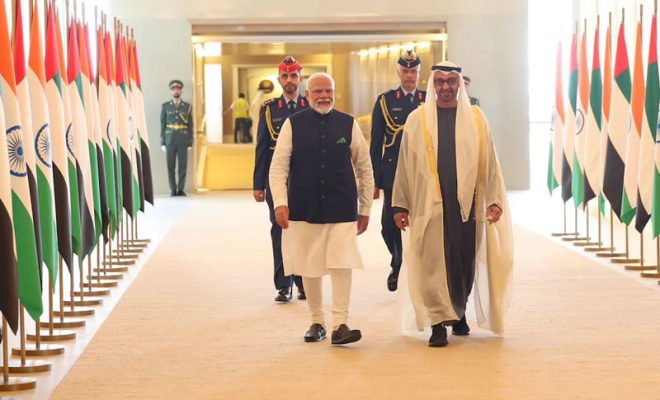Is UAE-India CEPA More Than Just a Trade Deal ?- Details Inside

This comprehensive economic partnership agreement (CEPA) between the United Arab Emirates and India has become one of the cutting edges for these two nations in the growing economic relationship between them. This accords importance to the alliance as a trade deal, but it has well gone on to become a strategic partnership to strengthen trade, enrich investment opportunities, and deepen cooperation in different sectors between the two countries.
CEPA between the UAE and India
This was the CEPA between the UAE and India that was signed in February 2022 and marked a major milestone for the bilateral relationship of the two countries. Come into effect during May 2022, its impacts have been all over. The deal lays the foundation for eliminating or minimizing tariffs on goods, streamlining trade barriers, and enhancing market access for both countries in this area. The scope of the CEPA has also been extended to other aspects such as investment and competition laws and public procurement, thereby rendering it more wide-reaching than any of the traditional Free Trade Agreements (FTAs).
One of the notable features of the UAE-India CEPA is its aspect of enhancing trade in goods and services and investment flows. Both countries have agreed to promote collaboration in areas such as textiles, gems and jewelry, chemicals and pharmaceuticals, technology, renewable energies, and the development of infrastructure, among others. The scope is wide, thus increasing trade volume at the same time leading to greater exchange of ideas and innovation.
CEPA at the G20 Summit: A Milestone in UAE-India Relations
CEPA now forms a significant part of the larger architecture where the two nations are currently working on identifying and venturing into different growth areas. Such an opportunity would be at the G20 summit hosted by India, which was instrumental for the two nations in building a further solid foundation for this bilateral partnership. They both signed many agreements during that summit, including the CEPA.
It is one of the major “Tier 1” agreements under which the entire CEPA initiative with the UAE is being built. India is considered a “Tier 1” partner for the UAE because it plays an extremely significant role in the trade portfolio by majorly contributing to the exports and imports of the UAE. As of 2023, India contributed 7.62% of the total amount for which the UAE traded with the world and had a total trade value of US$54.2 billion with it. The focus on this particular partner as a “Tier 1” partner highlights the strategic significance of the UAE-India economic relationship.
The agreements, therefore, occupy a broader ambit that also includes countries that fall in the Tier 2 category, like Israel, Kenya, and Cambodia. Even if these countries have smaller trade volumes, they assume significance with respect to the efforts of the UAE to diversify its trade portfolio and reduce its dependency on any single partner.
Impact on the Indian and UAE Economies and Trade
The CEPA has had a major impact on the economies of India and the UAE. For India, the agreement has greatly opened up markets for Indian goods and services, especially for the textile, chemical, and agricultural products sectors. The UAE is one of the largest consumer markets in the world, and now has greater access to it.
The UAE has now become a major re-export hub for Indian products, meaning that products from India trade directly to the UAE, and from there on to other markets in the Middle East, Africa, and Asia. This re-export business is very vital for the Indian economy, especially for the growth of the Indian export of manufactured and value-added products.
For the UAE, the CEPA grants greater accessibility to the Indian market, which harbors demand for UAE products, especially in petrochemicals sector, machinery, and technology solutions. The agreement has subsequently fast-tracked bilateral investment flows largely in energy, infrastructure, and tourism. Investors from the UAE are now keen to capitalize on India’s bullish sectors with great prospects for joint ventures and partnerships.
CEPA And Its Regional Impact
Expectedly, the CEPA between the UAE and India will have significant regional repercussions. Deepening their trade relations, the agreement can potentially set a precedent for other countries in the region. For example, the CEPA can very well be a model for the subsequent trade treaties between the UAE and Nations in South Asia, Southeast Asia, and even Africa. Being uniquely positioned as a trade hub and re-export center, the UAE will act as a gateway for Indian goods and services to reach these countries.
Further, fittingly with the broader trend of economic diplomacy of the UAE, CEPA goes on to strengthen its hold in the Gulf Cooperation Council. The UAE has had bilateral agreements but continues to maintain its ties with the authorities of the GCC. The neighboring countries like Saudi Arabia, Oman, and Kuwait will also have stake benefits from the UAE-India accords on account of the UAE being a re-export hub for the region.
Review of the Earlier Agreements
The UAE-India trade relationship has a long history, with several key agreements paving the way for the CEPA.
- The UAE-India Strategic Partnership Agreement (2017) played a crucial role in strengthening economic ties.
- Earlier agreements, such as the UAE-India bilateral trade agreement, focused on energy cooperation and trade in goods.
As both economies expanded, the demand for a more comprehensive trade framework led to the negotiation of the CEPA.



